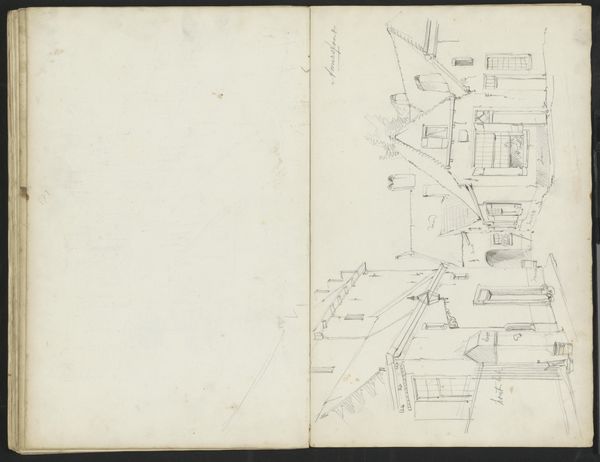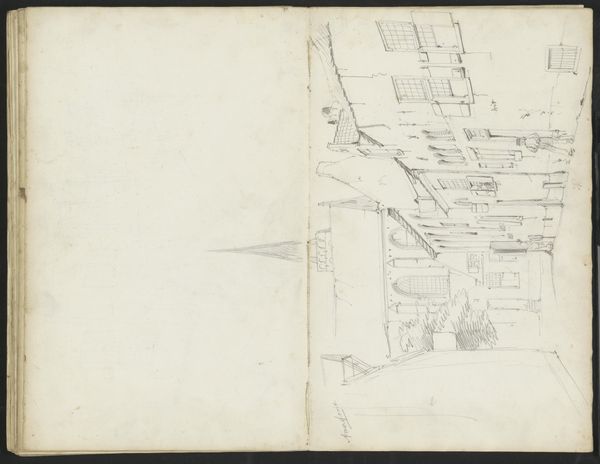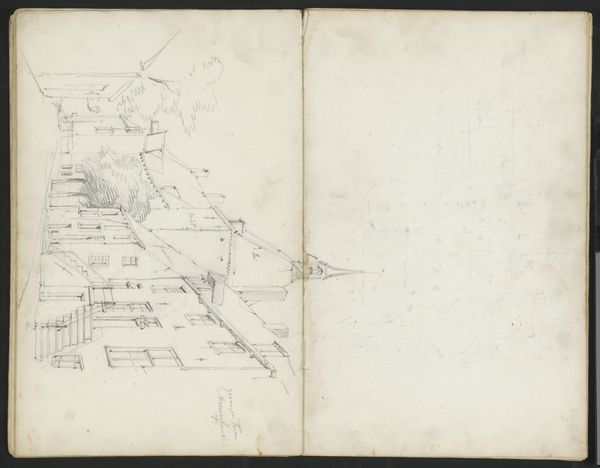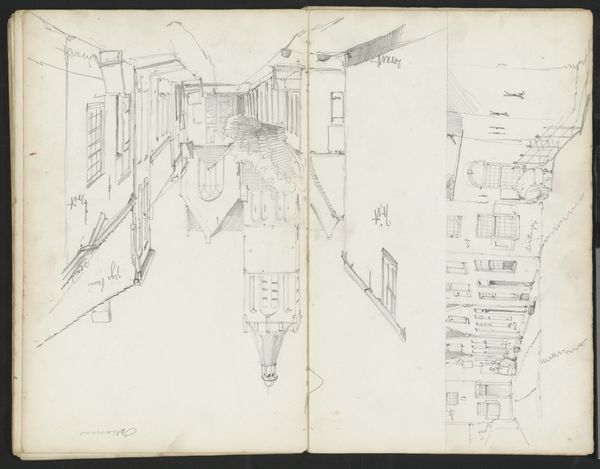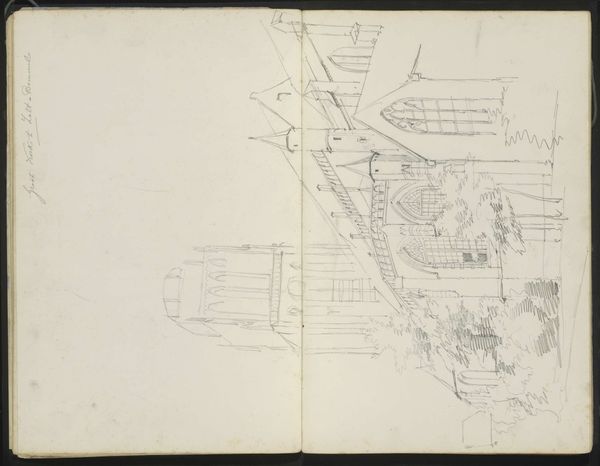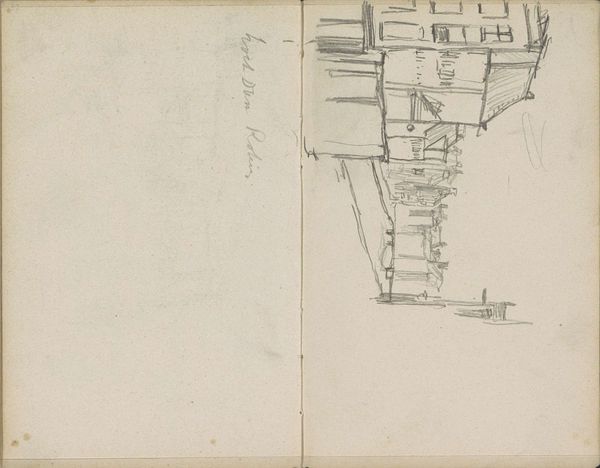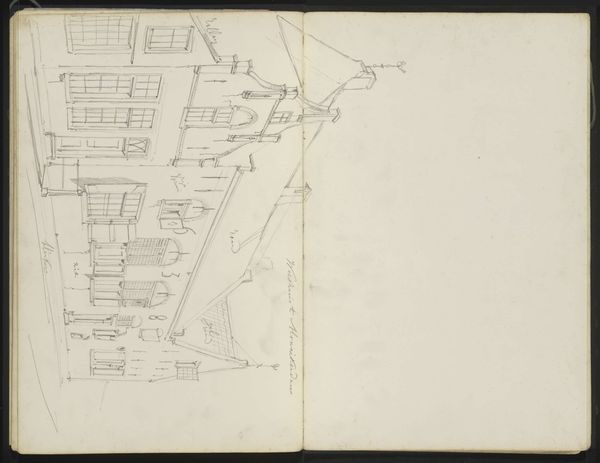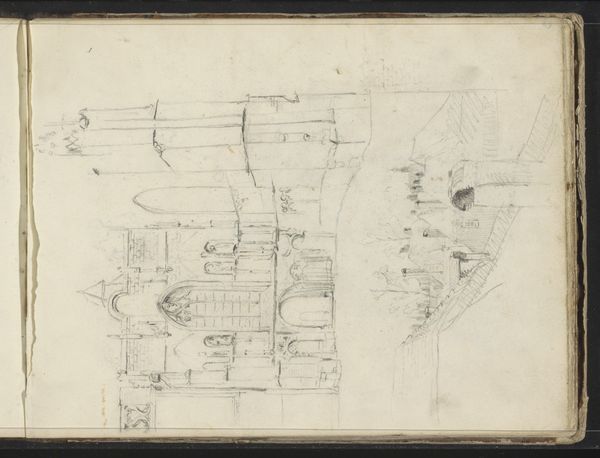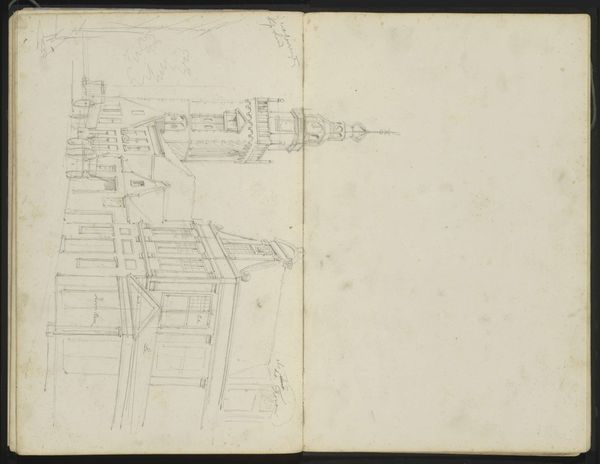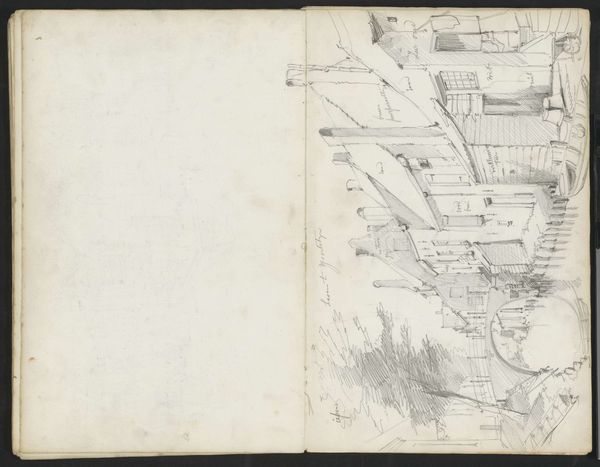
Vrouw bij een doorgang in de Valkestraat en de Muurhuizen te Amersfoort 1849 - 1895
0:00
0:00
drawing, pencil, pen
#
drawing
#
aged paper
#
quirky sketch
#
pen sketch
#
sketch book
#
hand drawn type
#
personal sketchbook
#
pen-ink sketch
#
pencil
#
pen work
#
sketchbook drawing
#
pen
#
cityscape
#
sketchbook art
Copyright: Rijks Museum: Open Domain
This is Willem Koekkoek’s “Vrouw bij een doorgang in de Valkestraat en de Muurhuizen te Amersfoort,” a graphite drawing on paper. As a study, rather than a finished artwork, we can appreciate the economy of means with which Koekkoek depicted this architectural scene. The graphite is applied with varying degrees of pressure to create contrasts in tone. Notice the quick, light strokes used to suggest the overall structure and the deeper, more confident lines to define specific details, like the windows and rooflines. Drawings like this one offer a glimpse into the artist's process, and into the labor of seeing and recording that underpins the production of more finished paintings. The use of a relatively inexpensive material like graphite allowed Koekkoek to rapidly capture his observations. This mode of sketching, prioritizing speed and efficiency, fits perfectly within the burgeoning art market of the 19th century. Ultimately, by emphasizing the material and the making, we can appreciate how drawings like this one represent not just a scene, but a moment in the history of artistic practice.
Comments
No comments
Be the first to comment and join the conversation on the ultimate creative platform.
